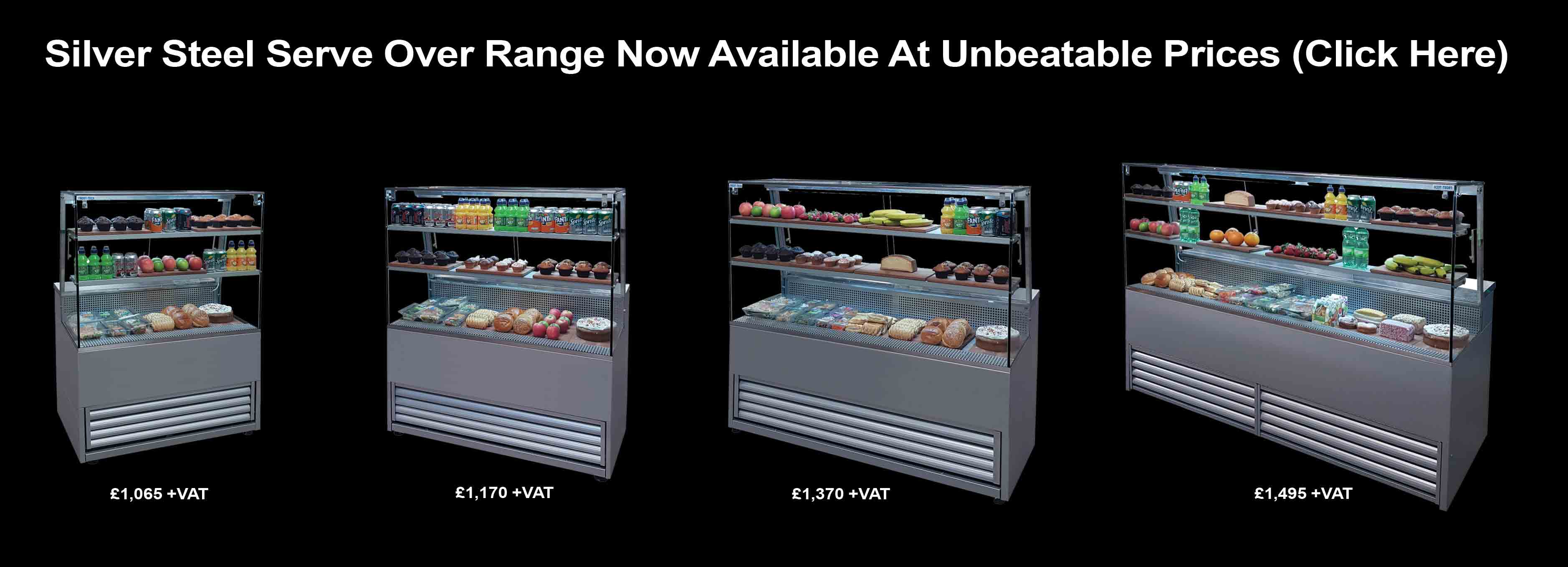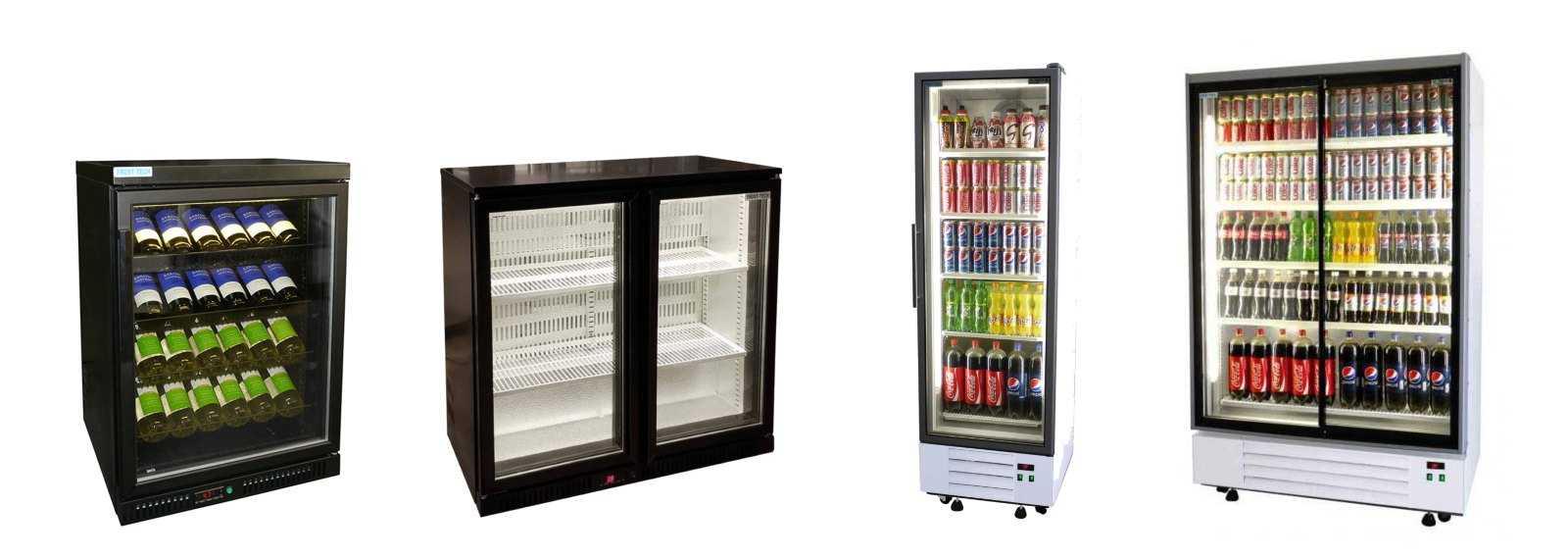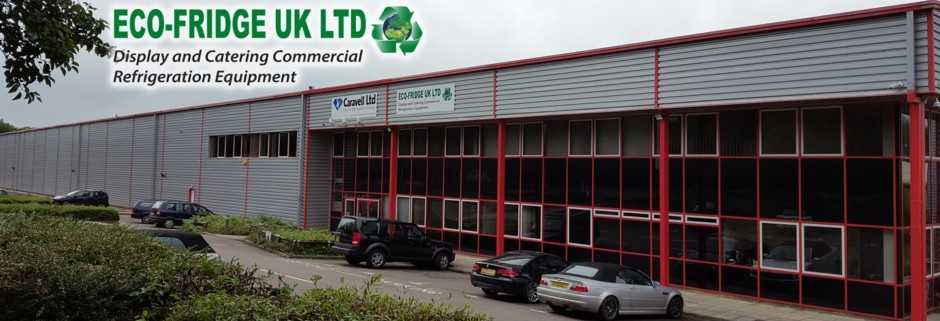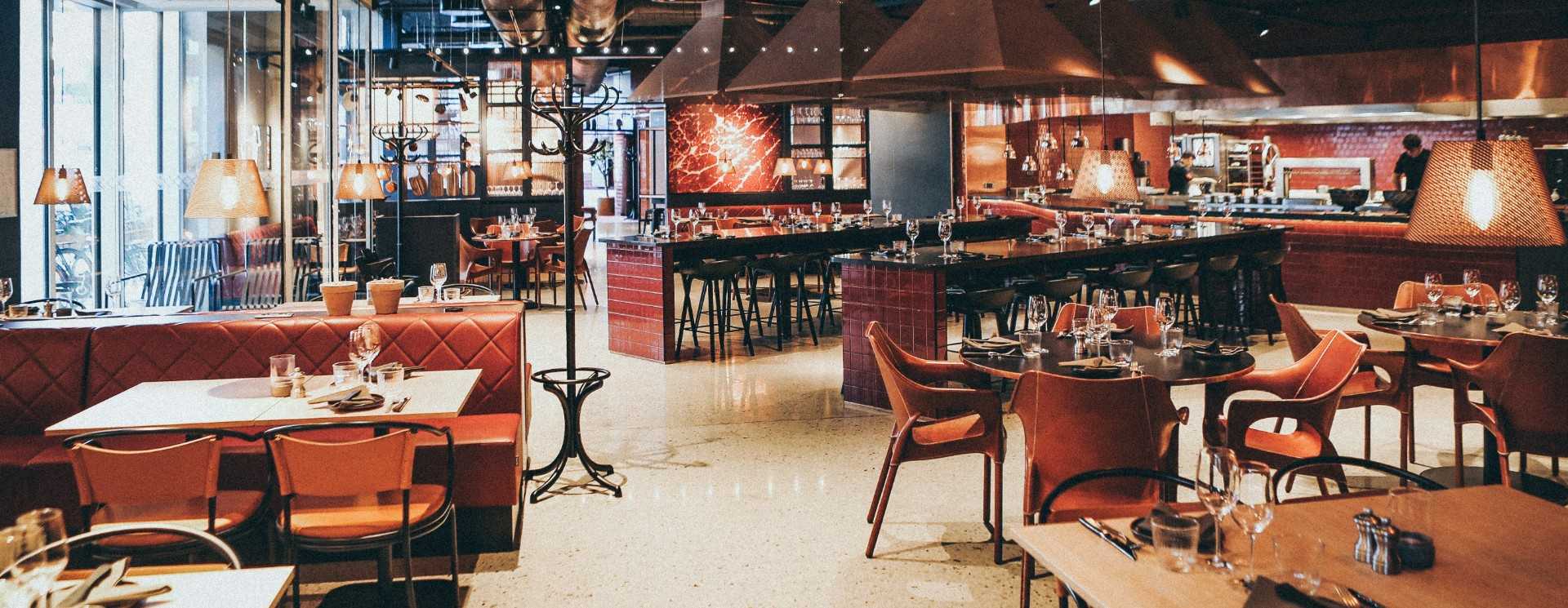All the different types of commercial refrigerators have a few things in common. They keep foods chilled and fresh with a stainless steel exterior and an insulated interior.
Every time someone thinks of a commercial fridge, most of us imagine the commercial freezers in our shop. When it comes to commercial refrigeration we are talking about something far much different. If you plan to open a store that will present beverage and food items to your customers, then you need to have a fundamental understanding and knowledge of the different types of commercial fridges.
You can also read about:
5 Tips To Maintain Your Commercial Fridge
Tips to make your commercial refrigerator enticing to clients
Use a Patisserie Multideck to improve your business!
How To Keep a Commercial Fridge Cold
The best tips to have an effective eatery business
Different Types Of Commercial Refrigerators
Commercial refrigerators are a necessity and a vital part of any foodservice operation. Each commercial refrigerator category is designed for specific applications, so if you have a business plan in place, it should be easy to narrow down your fridge selection. We often categorize food and beverage companies, supermarkets, convenience stores and restaurants as businesses that require commercial refrigeration systems. But hospitals and medical research clinics often use commercial refrigeration to keep sensitive materials at the appropriate temperature.
The thermal dynamics are the same for commercial and industrial applications.
Besides temperature range, other distinctions between commercial and industrial applications include the expectations or requirements for weather resistance, chemical resistance, corrosion resistance, pipe sizes, and longevity. Commercial jobs are probably new construction and predominately indoor applications, whereas industrial projects are often retrofit or plant expansion work, with an approximate outdoor-to-indoor ratio of 60-to-40. These factors tend to make industrial jobs much more complicated. Labour and jacketing selection are key factors as well.

1. Reach-in Freezers And Refrigerators
These are storage fridges, perfect for the back of house operations. You can acquire both glass door fridges with reach-in units and solid door reach-in units in Dutch style half or full-length doors. The storage capacity of reach-in units is determined by cubic feet and they also have multiple sections.
2. Walk-in Refrigerators
If you plan to open a restaurant that requires a large amount of storage space, then you should consider investing in walk-in refrigerators. For optimal organization, many operators set up commercial shelving operations inside their walk-in freezers. These walk-in units are great for storing juices, alcohol, bulk or boxed items.
3. Serve Over Counter
These units are perfect if you plan to open a meat outlet, café or grocery store. They make the displayed items much more appealing by using bent or level glass. Serve-over-counters are similar to counter-top display refrigerators; the only difference is that serve-over-counter units don’t have a glass that fully covers the food products. Customers can get what they want without asking the servers.

4. Under-counter Refrigerators
These units function similarly to upright reach-in units. The only difference is that they are much shorter and they can fit into much smaller spaces. So if your commercial kitchen needs a unit to store few products that can be used on an as-needed basis then an under-counter refrigerator would be appropriate.
5. Bar Refrigerators
There are many types of bar refrigerators such as back bar refrigerators, plate chillers, keg coolers, etc. Bar refrigerators are normally designed with black vinyl or a stainless steel exterior to give the under-counter bar area a more streamlined look.

6. Pastry Or Bakery Display
These units can either have a traditional wooden finish or stainless steel curved with glass. It usually has the front part covered with glass so that customers can view all the bakery and pastry products.
7. Refrigerated Prep Tables
These units are used in the preparation area or cook line in the commercial kitchen. There are two major versions of the refrigerated prep tables: pizza prep tables and sandwich/salad tables. Cold storage wells keep ingredients cold and fresh.
This refrigerator has drawers that store prepared sauces or dressings. The biggest difference between a pizza table and a salad table is probably the depth of the cutting board. For a pizza table, the cutting board is deeper and can easily accommodate a wide diameter pizza.

How To Arrange Your Commercial Kitchen Equipment?
Each restaurant needs different commercial kitchen equipment so it is up to you to tailor your equipment layout to the needs of your restaurant. Organizing and laying out a commercial kitchen is not an easy task and you may need some professional help. There are some professionals whose main area of specialization is laying out and designing a commercial kitchen. Some of the resources you can use include interior designers with background experience in restaurant design or restaurant designers. Restaurant equipment dealers may also have some knowledge of how to arrange commercial kitchen equipment.
You can also read about:
Commercial Refrigeration Proficiency
How Does Commercial Fridges Work?
How to organize your kitchen and commercial fridge?
Laying Out Your Commercial Kitchen Equipment
When laying out equipment in your commercial kitchen, all pieces of cooking equipment should be under a hood, except for the microwave oven. The hood keeps the kitchen safe by pulling out excessive heat and harmful fumes. You may, therefore, need to have several hoods depending on how many pieces of equipment you have.
Centre your char-boilers, griddles, and ranges. This equipment has exposed cooking surfaces and they generate a lot of heat so you have to ensure that they are centred beneath a large hood or they all have their dedicated hood.
Ovens should be under their hood. Many restaurants that invest in standalone ovens like commercial convection ovens or pizza deck ovens, do not cook other types of food so they will need one exhaust for the oven. If your plan to do all kinds of cooking from frying to grilling, then you should put a hood over each oven.
Don’t keep fryers together. When using commercial deep fryers, there will always be oil splashes and this may raise some concerns. To prevent the griddle top from being splattered with oil, place a small commercial work table to separate other pieces of equipment from the fryer.
Keep your simmering equipment in one place. Stockpot ranges, tilting skillets and steam kettles are used for boiling water, broths, stews and soups. If you plan to use them in your restaurant, consider keeping them all together in one place.
You should also separate your refrigeration from the cooking block. The main purpose for doing this is to maximize energy efficiency.

Commercial vs. Industrial Applications
There is no definite rule for arranging your commercial kitchen equipment. It all comes down to your particular needs and the space you have available. Remember that where you place your equipment should reduce the number of steps your employee has to make. This will reduce the amount of fatigue, discomfort and injury in the kitchen. A well-arranged kitchen is integral to profitable food production, safe and efficient.
Insulation application types can be divided into many categories. One way to define them is by market: residential, commercial, or industrial. For the purposes of this article, the comparison will be limited to commercial versus industrial. How would a contractor approach these applications differently from materials, quote, or labour standpoint? Focusing specifically on cold applications, this article will zero in on below-ambient-temperature applications.
How Are Commercial and Industrial Applications Defined?
First, what are some examples of commercial and industrial applications? Typical commercial applications include strip malls, office buildings, hospitals, schools, churches, hotels, condominiums, supermarkets, ice rinks, and maybe even light manufacturers. Common industrial applications include manufacturing, food processing or storage, chemical, petrochemical, and power plants. Contractors tend to classify themselves as either commercial or industrial based on the type of projects they work on most. Industrial contractors may bid on commercial work when the industrial sector slows down, but most commercial contractors stay predominately within their main area of expertise. Commercial work tends to track the economy and be fairly stable, while industrial projects tend to be based on longer-term economic projections and needs, and tend to be more cyclical (feast or famine). Once allocated, they progress regardless of current conditions.
The distinction between commercial and industrial contractors is fairly clear. However, as contracting firms become larger and their need for business grows, the distinction may blur.
Often, the perception of industrial applications is that they represent mostly “hot” insulation work. Although industrial applications may have more hot work (it is estimated that 75 per cent of industrial work is hot), there are certainly plenty of industrial applications that involve cold water, chilled water, refrigeration, and cryogenic applications, too. From a temperature standpoint, industrial applications cover a wider range than commercial: Below-ambient industrial applications can go from 50° to -300°F or below, while commercial work stops around -10°F. With more extreme temperatures, industrial work often involves multilayer insulation because of the thickness requirements and additional vapour barriers needed to prevent condensation or ice formation. Industrial applications also may exhibit much greater temperature cycling, which can create issues with both the insulation and jacketing.
From a performance standpoint, industrial and commercial applications attempt to accomplish the same goals:
- Reduce heat gain
- Save energy
- Reduce emissions
- Prevent condensation
- Improve equipment performance
- Improve process performance
- Reduce water consumption
- Improve personnel protection
- Control sound
- Provide freeze protection

Commercial Fridges are for Shops
Commercial jobs are easier to access, the work is not as congested, and there is less need for secondary jacketing, which allows the insulation to be applied more efficiently. On the other hand, commercial work often is released in stages as a job progresses. For example, condominium projects may be released as floors are finished, so the total time to complete the work may be much longer than that of an industrial job where the time frame is tighter because the job must be completed during a shutdown period. Some industrial jobs are bid on a time-and-materials or a cost-plus basis, which would not typically be the case on the commercial side. Industrial jobs must be bid with more contingency factors built-in because of the variables that may be associated with the job. The safety record of a company is also very important when bidding for an industrial job, whereas that might not be a key component for a commercial job.
Unfortunately, many commercial jobs are submitted for bid with drawings that may be as little as 60-per cent complete. “Commercial applications require a high degree of knowledge of the systems involved to ensure that the estimate is complete,” says W. Paul Stonebraker of TRA Thermatech.
Materials and Thickness Requirements
From a materials standpoint, the temperature range of commercial jobs means that the most common insulation products—such as fibreglass, polyolefin, or elastomeric materials—are usually used, although there is some overlap with the industrial jobs, which often use other materials, including cellular glass and polyisocyanurate. As changes in materials occur, they may be used in applications where they were not previously considered.
In some cases, the type of pipe material being covered may limit the type of insulation used. Minimum insulation thickness requirements will be dictated by building codes for commercial jobs, but by the building owner for industrial jobs. This means the contractor is more limited in materials for commercial jobs—there may be a couple of materials to choose from, depending on the engineering specification, but the minimum thickness will be dictated by code. Industrial owners often contact insulation contractors for input on what materials perform best. Whether the job is commercial or industrial, materials cost and ease of installation (labour) will dictate what is used. From the owner’s point of view, ease of maintenance also may be a factor in material selection.
Everyone looks for an edge that will provide a lower cost, which is where ease of installation can tip material selection one way or another.
In both industrial and commercial cases, application failure can result in major costs, so shortcuts should not be taken. Best practices must be employed. Because of project size, failures on industrial jobs may be larger, but owners are generally involved in the process and more specific about the type of insulation and installation. Since commercial work involves more contact with the public, the possibility of a lawsuit as a result of a failed job is more likely. The commercial contractor also has to be flexible and adapt to changing customer expectations that may not be as well defined as those in the industrial sector.
Also read about: Takeaway and Delivery – the Food Business Future
Make proper Maintenance for your Commercial Fridge
Consider, for example, the issue of mould and mildew. Paul Sawatzke of Enervation, Inc., points out that “the issue of moisture, mould, and mildew is changing the way many contractors are looking at the material selected for commercial jobs. We need to react to the needs of the marketplace.”
There may be the mistaken concept that commercial work can be taken less seriously than industrial work. One lawsuit will convince anyone that this is not the case. Being able to seal up the insulation system and keep moisture out is the key to a good below-ambient application.
Most building codes or insulation recommendations like ASHRAE 90.1 base their insulation thickness tables on energy savings. This is due to the complexity of the tables necessary to account for all of the variables that affect energy savings, condensation formation, and the liability associated with a recommendation if it results in a failed application. However, the thickness needed to prevent condensation is often greater than the reference tables suggest.
For higher relative humidity (RH), ambient temperatures, and pipe sizes—or for lower fluid temperatures—greater thickness will be needed to prevent condensation. In conditions where the dew-point temperature is close to the ambient temperature, the surface emissivity of the insulation jacket or facing can have a major impact on the insulation thickness required for condensation control. It is recommended that 3E Plus® or a program from the material manufacturer be used to calculate insulation thickness. In addition, some materials are only available in specific sizes. As shown in Table 1, the differences in K-value are not drastically different until the temperatures become more extreme. Greater insulation thickness also means greater jacketing and pipe hanger costs.
Read more about:
Is your commercial fridge spilling Freon?
5 Essential Equipment to Start a Fast-Food Business
Organizing a Commercial Fridge in your convenience store
Commercial Refrigerators Insulation
The insulation used on a job is only part of the cost. This is particularly true of outdoor applications that must be jacketed. Jacketing provides a variety of functions, such as weather protection (including protection from ultraviolet rays); moisture and moisture vapour protection; mechanical abuse resistance; chemical resistance; added corrosion resistance; and, in some applications, fire protection. Jacketing traditionally has been aluminium, stainless steel, or polyvinyl chloride (PVC). PVC is generally limited to commercial applications.
“Because of the often required multilayered insulation and jacket requirements, industrial jobs are more technical and require a very skilled workforce. I would take industrial jobs over commercial jobs every day,” says Steve Isler of Old Dominion.
The Bottom Line
So how do commercial and industrial applications compare? Surprisingly, most contractors’ opinions on the topic are very consistent. First, it is evident that commercial contractors like to do commercial work and industrial contractors like to do industrial work. Each believes their sector of the business is the best in which to operate. Because of temperature extremes and environmental factors, industrial applications tend to be more complex, which limits the number of contractors bidding on such projects. For these applications, contractors seek out the materials and practices that provide the lowest cost and fastest installation and give them an edge in quoting and providing reliable systems that meet the technical requirements of the job. This may be in the insulation itself, the jacketing, or the installation practices.
What does the future of commercial and industrial work look like? Peter J. Gauchel of L & C Insulation, Inc. says, “The commercial sector is strong right now. The industrial sector is also extremely strong and appears to be set to stay that way for some time in the future, based on the work in the power industry.”
Besides work in traditional power plants, ethanol plants are popping up all over the Midwest, and the prospect of LNG terminals from New York to Seattle should keep the industrial sector strong into the future. As for the commercial sector, as long as the economy stays strong, it will do just fine. Although the commercial and industrial sectors use similar materials and practices and may have similar problems such as skilled labour shortages, the markets are distinctly different in how they are quoted, installed, and billed. Contractors in both sectors can be proud of their work—saving energy, reducing greenhouse gas emissions, and making the world run a little better, one pipe at a time.
Related articles:
The basic points of using Commercial Display Fridges and Freezers
Multideck Display Fridge – A complete space saver for your business
How To Boost Your Online Takeaway Orders?


